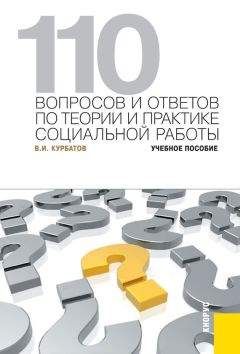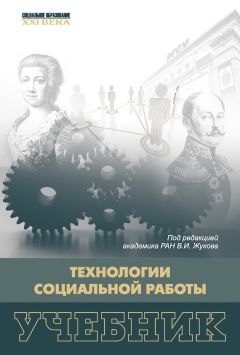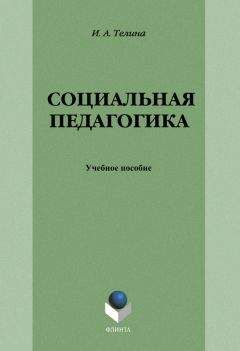Питер Грей - Свобода учиться. Игра против школы
Feldman, J., & Gray, P. (1999). Some educational benefits of freely chosen age mixing among children and adolescents. Phi Delta Kappan, 80, 507–512.
Ferguson, C. (2010). Blazing angels or resident evil? Can violent video games be a force for good? Review of General Psychology, 14, 68–81.
Ferguson, C., & Rueda, S. M. (2010). The Hitman study: Violent video game exposure effects on aggressive behavior, hostile feelings, and depression. European Psychologist, 15, 99–108.
Finkelhor, D., Turner, H., Ormrod, R., & Hamby, S. L. (2010). Trends in childhood violence and abuse exposure: Evidence from two national surveys. Archives of Pediatric and Adolescent Medicine, 164, 238–242.
Fredrickson, B. L. (2001). The role of positive emotions in positive psychology: The broaden-and-build theory of positive emotions. American Psychologist, 56, 218–226.
–. (2003). The value of positive emotions. American Scientist, 91, 330–335. Friedman, S. (1972). Habituation and recovery of visual response in the alert human newborn. Journal of Experimental Child Psychology, 13, 339–349.
Furth, H. G. (1996). Desire for society: Children’s knowledge as social imagination, 149–173. New York: Plenum.
Furth, H. G., & Kane, S. R. (1992). Children constructing society: A new perspective on children at play. In H. McGurk (Ed.), Childhood social development: Contemporary perspectives. Hillsdale, NJ: Erlbaum.
Galton, M. (2009). Moving to secondary school: Initial encounters and their effects. Perspectives on Education: Primary Secondary Transfer in Science, 2, 5–21.
Gardner, P. M. (1991). Foragers’ pursuit of individual autonomy. Current Anthropology, 32, 543–572.
Goebel, R. L. (2000). Can we talk? Manifestations of critical thinking in young people’s spontaneous talk.Master’s thesis, School of Education, DePaul University, Chicago.
Goldman, J. A. (1981). Social participation of preschool children in same versus mixed-age groups. Child Development, 32, 644–650.
Goldstein, J. (2011). Technology in play. In Anthony D. Pellgrini (Ed.), The Oxford handbook of the development of play, 322–337. Oxford: Oxford University Press.
Good, K., & Chanoff, D. (1991). Into the heart: One man’s pursuit of love and knowledge among the Yanomama. New York: Simon & Schuster.
Gordon, D. M. (1999). Ants at work: How an insect society is organized. New York: Free Press.
Gordon, M. (2005). The roots of empathy: Changing the world child by child. Toronto: Thomas Allen Publishers.
Gorrell, J., & Keel, L. (1986). A field study of helping relationships in a cross-age tutoring program. Elementary School Guidance and Counseling, 24, 268–276.
Gosso, Y., Otta, E., de Lima, M., Ribeiro, F. J. L., & Bussab, V. S. R. (2005). Play in hunter-gatherer societies. In A. D. Pellegrini & P. K. Smith (Eds.), The nature of play: Great apes and humans, 213–253. New York: Guilford.
Gould, R. A. (1969). Yiwara: Foragers of the Australian desert. New York: Charles Scribner.
Gray, P. (1993). Engaging students’ intellects: The immersion approach to critical thinking in psychology instruction. Teaching of Psychology, 20, 68–74.
–. (2009). Play as the foundation for hunter-gatherer social existence. American Journal of Play, 1, 476–522.
–. (2010). ADHD and school: The problem of assessing normalcy in an abnormal environment. Psychology Today, Freedom to Learn blog, Published online at www.psychologytoday.com/blog/freedom-learn/201007/adhd-and-school-the-problem-assessing-normalcy-in-abnormal-environment.
–. (2011a). The decline of play and the rise of psychopathology in childhood and adolescence. American Journal of Play, 3, 443–463.
–. (2011b). The evolutionary biology of education: How our hunter-gatherer educative instincts could form the basis for education today. Evolution: Education and Outreach, 4, 28–40.
–. (2011c). The special value of children’s age-mixed play. American Journal of Play, 3, 500–522.
Gray, P. (2012a). Doing more time in school: A cruel non-solution to our educational problems. Psychology Today, Freedom to Learn blog. Published online at www.psychologytoday.com/blog/freedom-learn/201205/doing-more-time-in-school-cruel-non-solution-our-educational-problems-0.
Gray, P. (2012b). (1) The benefits of unschooling: Report I from a large survey; (2) What leads families to unschool their children: Report II from a large survey; (3) The challenges of unschooling: Report III from a large survey. Psychology Today, Freedom to Learn blog. Three reports, published online beginning with www.psychologytoday.com/blog/freedom-learn/201202/the-benefits-unschooling-report-i-large-survey.
Gray, P., & Chanoff, D. (1986). Democratic schooling: What happens to young people who have charge of their own education? American Journal of Education, 94, 182–213.
Gray, P., & Feldman J. (1997). Patterns of age mixing and gender mixing among children and adolescents at an ungraded democratic school. Merrill-Palmer Quarterly, 43, 67–86.
–. (2004). Playing in the zone of proximal development: Qualities of selfdirected age mixing between adolescents and young children at a democratic school. American Journal of Education, 110, 108–145.
Green, C. S., & Bavelier, D. (2003). Action video game modifies visual selective attention. Nature, 423, 534–537.
Greenberg, D. (1974). Outline of a new philosophy. Framingham, MA: Sudbury Valley School Press.
–. (1987). Free at last: The Sudbury Valley School. Framingham, MA: Sudbury Valley School Press.
–. (1992). Sudbury Valley’s secret weapon: Allowing people of different ages to mix freely at school. In D. Greenberg (Ed.), The Sudbury Valley School experience, 3rd ed., 121–136. Framingham, MA: Sudbury Valley School Press.
Greenberg, D., & Sadofsky, M. (1992). Legacy of trust: Life after the Sudbury Valley School experience. Framingham, Massachusetts: Sudbury Valley School Press.
Greenberg, D., Sadofsky, M., & Lempka, J. (2005). The pursuit of happiness: The lives of Sudbury Valley alumni. Framingham, MA: Sudbury Valley School Press.
Greenberg, M. (1992). On the nature of sports at SVS, and the limitations of language in describing SVS to the world. In D. Greenberg (Ed.), The Sudbury Valley School experience, 3rd ed. Framingham, MA: Sudbury Valley School Press.
Greenleaf, B. K. (1978). Children through the ages. New York: McGraw-Hill.
Groos, K. (1898). The play of animals. New York: Appleton.
–. (1901). The play of man. New York: Appleton.
Guemple, L. (1988). Teaching social relations to Inuit children. In T. Ingold, D. Riches, & J. Woodburn (Eds.), Hunters and gatherers 2: Property, power, and ideology, 130–149. Oxford: Berg.
Hall, F. S. (1998). Social deprivation of neonatal, adolescent, and adult rats has distinct neurochemical and behavioral consequences. Critical Reviews of Neurobiology, 12, 129–162.
Harrow, M., Hansford, B. G., & Astrachan-Fletcher, E. B. (2009). Locus of control: Relation to schizophrenia, to recovery, and to depression and psychosis – a 15-year longitudinal study. Psychiatry Research, 168, 186–192.
Harter, S. (1981). A new self-report scale of intrinsic versus extrinsic orientation in the classroom: Motivational and informational components. Developmental Psychology, 17, 300–312.
Hay, D. F., & Murray, P. (1982). Giving and requesting: Social facilitation of infants’ offers to adults. Infant Behavior and Development, 5, 301–310.
Hennessey, B., & Amabile, T. (2010). Creativity. Annual Review of Psychology, 61, 569–598.
Herman, K. N., Paukner, A., & Suomi, S. J. (2011). Gene X environment interactions in social play: Contributions from rhesus macaques. In A. D. Pellgrini (Ed.), The Oxford handbook of the development of play, 58–69. Oxford: Oxford University Press.
Hewlett, B. S., Fouts, H. N., Boyette, A. H., & Hewlett, B. L. (2011). Social learning among Congo Basin hunter-gatherers. Philosophical Transactions of the Royal Society B, 366, 1168–1178.
Heywood, C. (2001). A history of childhood: Children and childhood in the West from medieval to modern times. Oxford: Blackwell.
Hofferth, S. (2009). Changes in American children’s time, 1997–2003. International Journal of Time Use Research, 6, 26–47.
Hofferth, S. L., & Sandberg, J. F. (2001). Changes in American children’s time, 1981–1997. In T. Owens & S. L. Hofferth (Eds.), Children at the millennium: Where have we come from, where are we going? 193–229. New York: Elsevier Science.
Howard-Jones, P. A., Taylor, J. R., & Sutton, L. (2002). The effect of play on the creativity of young children during subsequent activity. Early Child Development and Care, 172, 323–328.
Hughes, M. (1978). Sequential analysis of exploration and play. International Journal of Behavioral Development, 1, 83–97.
Hughes, M., & Hutt, C. (1979). Heart-rate correlates of childhood activities: Play, exploration, problem-solving, and day-dreaming. Biological Psychology, 8, 253–263.
Huizinga, J. (1955; first German edition published in 1944). Homo Ludens: A study of the play-element in culture. Boston: Beacon Press.
Hyman, M. (2009). Until it hurts: America’s obsession with youth sports and how it harms our kids. Boston: Beacon Press.
Inglis, I. R., Langton, S., Forkman, B., & Lazarus, J. (2001). An information primacy model of exploratory and foraging behavior. Animal Behaviour, 62, 543–557.
Ingold, T. (1999). On the social relations of the hunter-gatherer band. In R. B. Lee & R. H. Daly (Eds.), The Cambridge encyclopedia of hunters and gatherers, 399–410. Cambridge: Cambridge University Press.
Isen, A. M., Daubman, K. A., & Nowicki, G. P. (1987). Positive affect facilitates creative problem solving. Journal of Personality and Social Psychology, 52, 1122–1131.
Jenkins, J. M., & Astington, J. W. (1996). Cognitive factors and family structure associated with theory of mind development in young children. Developmental Psychology, 32, 70–78.
Johnson, D. (1998). Many schools putting an end to child’s play. New York Times, April 7, A1, A18.
Johnson, R. (2000). Notes on schooling of the English working class, 1780–1850. In Roy Lowe (Ed.), History of education: Major themes. Volume II: Education in its social context, Ch. 31. London: RoutledgeFlamer.
Judge, T. A., LePine, J. A., & Rich, B. L. (2006). Loving yourself abundantly: Relationship of the narcissistic personality to self – and other perceptions of workplace deviance, leadership, and task and contextual performance. Journal of Applied Psychology, 91, 762–776.
Kaestle, C. F. (2000). The legacy of common schooling. In Roy Lowe (Ed.), History of education: Major themes. Volume II: Education in its social context, Ch. 35. London: RoutledgeFlamer.
Kaplan, H., Hill, K., Lancaster, J., & Hurtado, A. M. (2000). A theory of human life history evolution: Diet, intelligence, and longevity. Evolutionary Anthropology, 9, 156–185.
Kelly, R. I. (1995). The foraging spectrum: Diversity in hunter-gatherer lifeways. Washington, DC: Smithsonian Institution Press.
Kent, S. (1996). Cultural diversity among African foragers: Causes and implications. In S. Kent (Ed.), Cultural diversity among twentieth-century foragers: An African perspective, 1–18. Cambridge: Cambridge University Press.
King, N. R. (1982). Work and play in the classroom. Social Education, 46, 110–113.
Kohn, M. L. (1980). Job complexity and adult personality. In N. J. Smelser & E. H. Erikson (Eds.), Theories of work and love in adulthood. Cambridge, MA: Harvard University Press.
Kohn, M. L., & Slomczynski, K. M. (1990). Social structure and self-direction: A comparative analysis of the United States and Poland. Cambridge, MA: Basil Blackwell.
Konner, M. (1975). Relations among infants and juveniles in comparative perspective. In M. Lewis & L. A. Rosenblum (Eds.), The origins of behavior, vol.4: Friendship and peer relations, 99–129. New York: Wiley.
–. (2002). The tangled wing: Biological constraints on the human spirit, 2nd ed. New York: Holt.
–. (2010). The evolution of childhood. Cambridge, MA: Harvard University Press.
Konrath, S. H., O’Brien, E. H., & Hsing, C. (2011). Changes in dispositional empathy in American college students over time: A meta-analysis. Personality and Social Psychology Review, 15, 180–198.
Lancy, D. F., Bock, J., & Gaskins, S. (2010). Putting learning into context. In D. F. Lancy, J. Bock, & S. Gaskins (Eds.), The anthropology of learning in childhood, 3–10. Lanham, MD: AltaMira Press.
Lanza, M. (2012). Playborhood: Turn your neighborhood into a place for play. Menlo Park, CA: Free Play Press.
LeBlanc, G., & Bearison, D. J. (2004). Teaching and learning as bi-directional activity: Investigating dyadic interactions between child teachers and child learners. Cognitive Development, 19, 499–515.
Lee, R. B. (1988). Reflections on primitive communism. In T. Ingold, D. Riches, & J. Woodburn (Eds.), Hunters and gatherers 1, 252–268. Oxford: Berg.
Lee, R. B., & DeVore, I. (1968). Problems in the study of hunters and gatherers. In R. B. Lee & I. Lee (Eds.), Man the hunter, 3–12. Chicago: Aldine.
Lepper, M. R., Corpus, J. H., & Iyengar, S. S. (2005). Intrinsic and extrinsic motivational orientations in the classroom: Age differences and academic correlates. Journal of Educational Psychology, 97, 184–196.
Lepper, M. R., Greene, D., & Nisbett, R. E. (1973). Undermining children’s intrinsic interest with extrinsic reward: A test of the “overjustification” hypothesis. Journal of Personality and Social Psychology, 28, 129–137.
Lepper, M. R., & Henderlong, J. (2000). Turning “play” into “work” and “work” into “play”: 25 years of research on intrinsic versus extrinsic motivation. In C. Sansone & J. M. Harackiewicz (Eds.), Intrinsic and extrinsic motivation, 257–307. San Diego, CA: Academic Press.
Leslie, A. M. (1994). Pretending and believing: Issues in the theory of ToMM. Cognition, 50, 211–238.
Liebenberg, L. (1990). The art of tracking: The origin of science. Claremont, South Africa: David Philip Publishers.
Liedloff, J. (1977). The continuum concept, rev. ed. New York: Knopf.
Luthar, S. S., & D’Avanzo, K. (1999). Contextual factors in substance use: A study of suburban and inner-city adolescents. Development and Psychopathology, 11, 845–867.
Luthar, S. S., & Latendresse, S. J. (2005). Children of the affluent: Challenges to well-being. Current Directions in Psychological Science, 14, 49–55.
Marshall, L. (1976). The!Kung of Nyae Nyae. Cambridge, MA: Harvard University Press.
Martini, M. (1994). Peer interactions in Polynesia: A view from the Marquesas. In J. L. Roopnarine, J. E. Johnson, & F. H. Hooper (Eds.), Children’s play in diverse cultures, 73–103. Albany: State University of New York Press.
Mayes, R., Bagwell, C., & Erkulwater, J. (2009). Medicating children: ADHD and pediatric mental health. Cambridge, MA: Harvard University Press.




